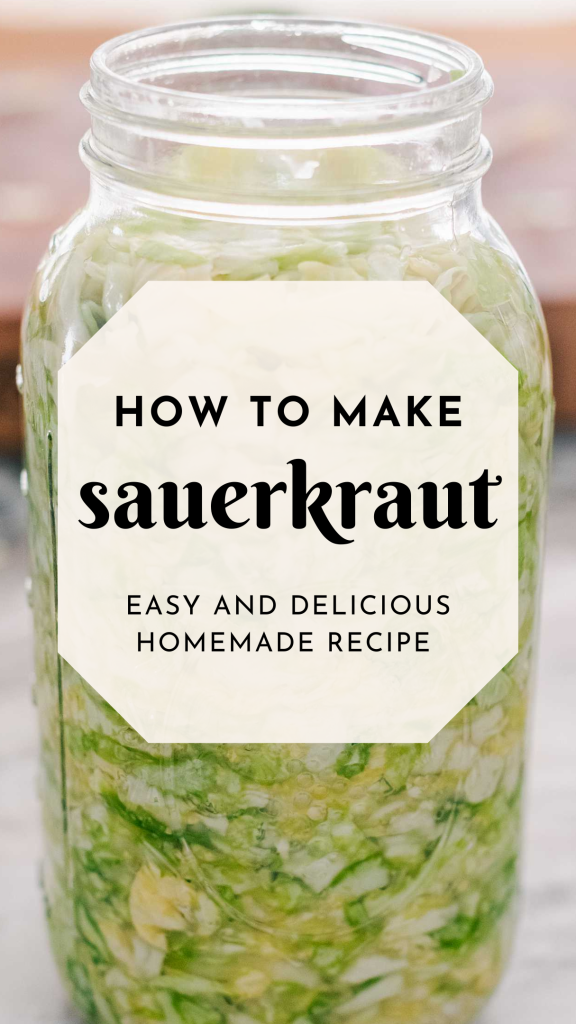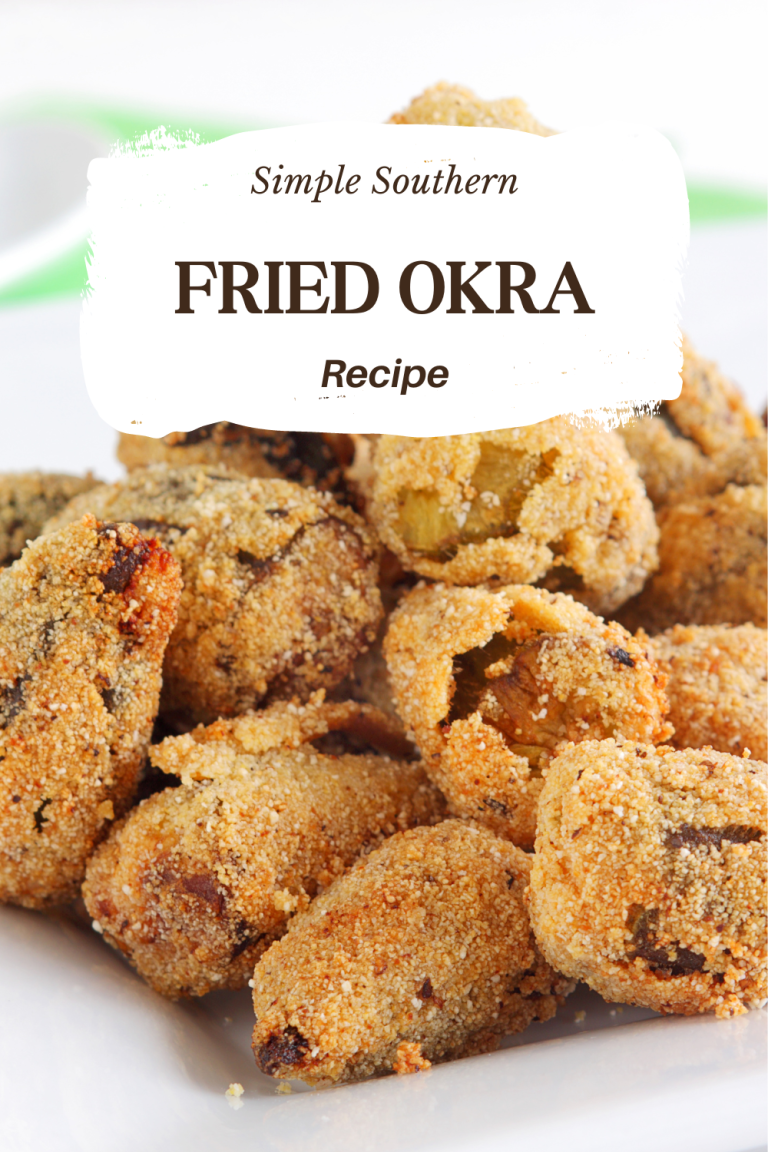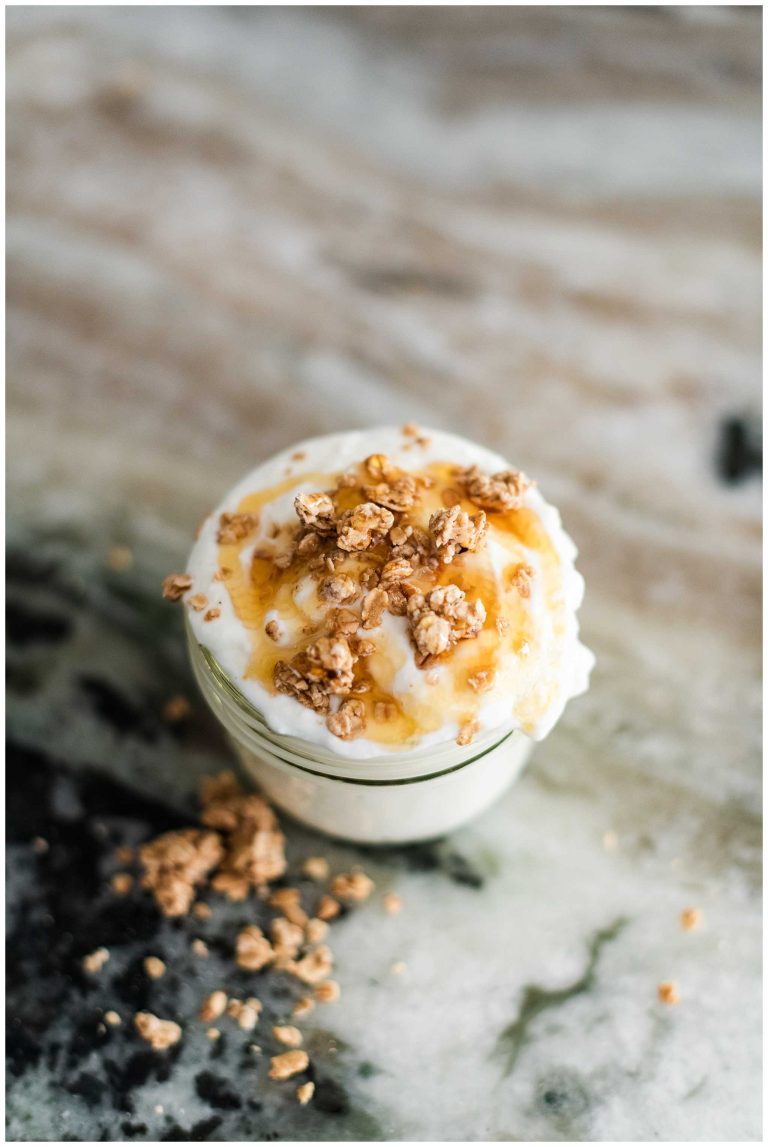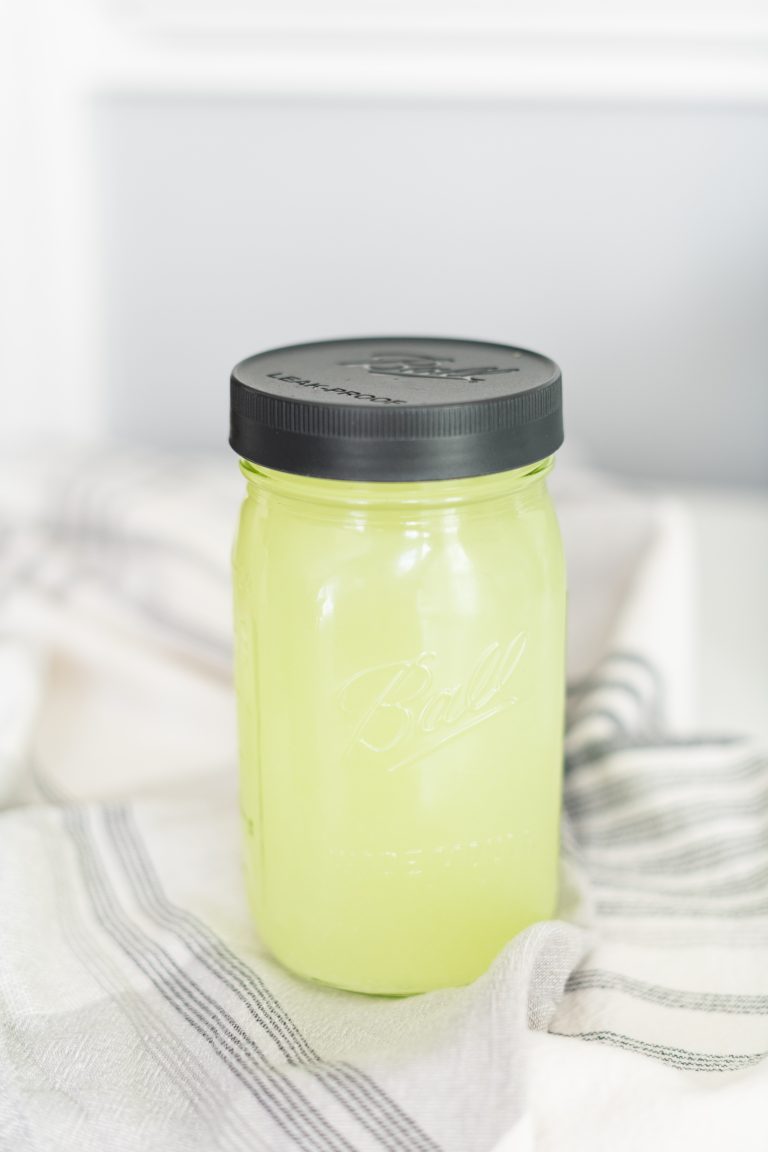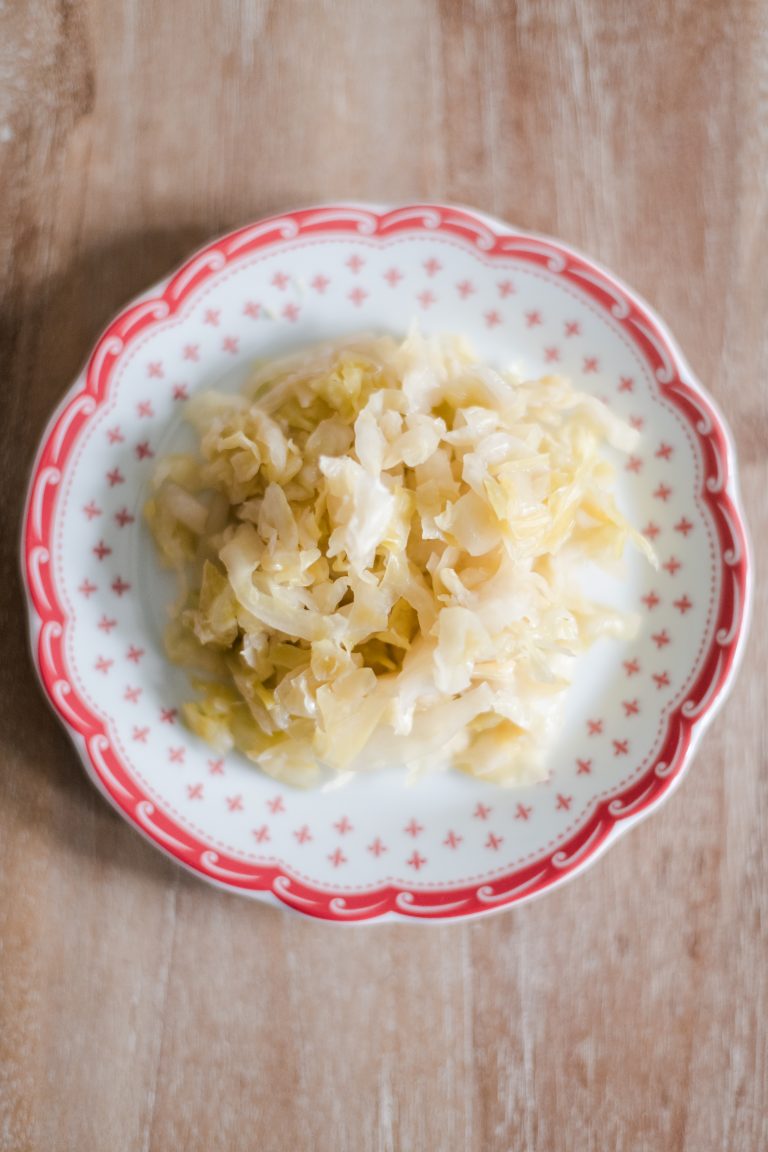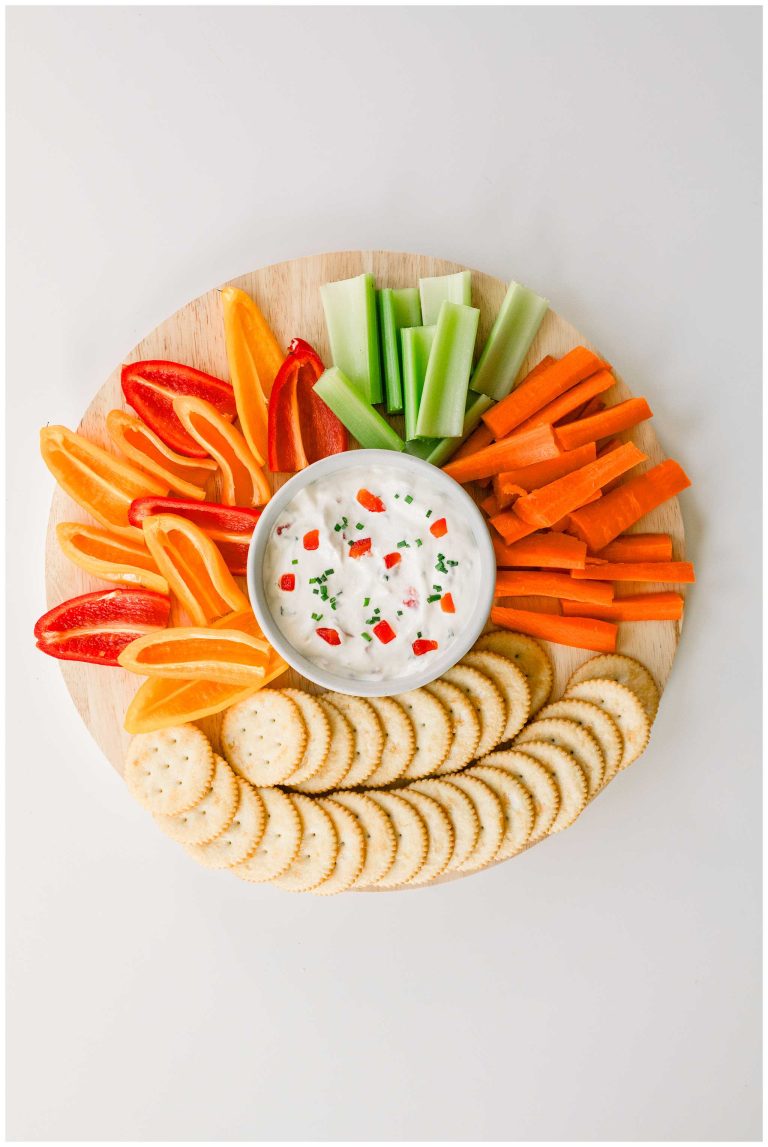How To Make Sauerkraut
Are you curious about how to make sauerkraut from scratch? Well, you’re in luck because I’ve got a step-by-step guide for you! And the best part? You don’t even need a food processor! Making sauerkraut without one can result in a crunchier texture and require fewer appliances overall. In this article, I’ll show you how to make sauerkraut without a food processor, complete with easy-to-follow pictures. Not only is homemade sauerkraut a tasty condiment, but it’s also packed with probiotics that can benefit your digestive health. So, let’s get started on how to make sauerkraut at home!
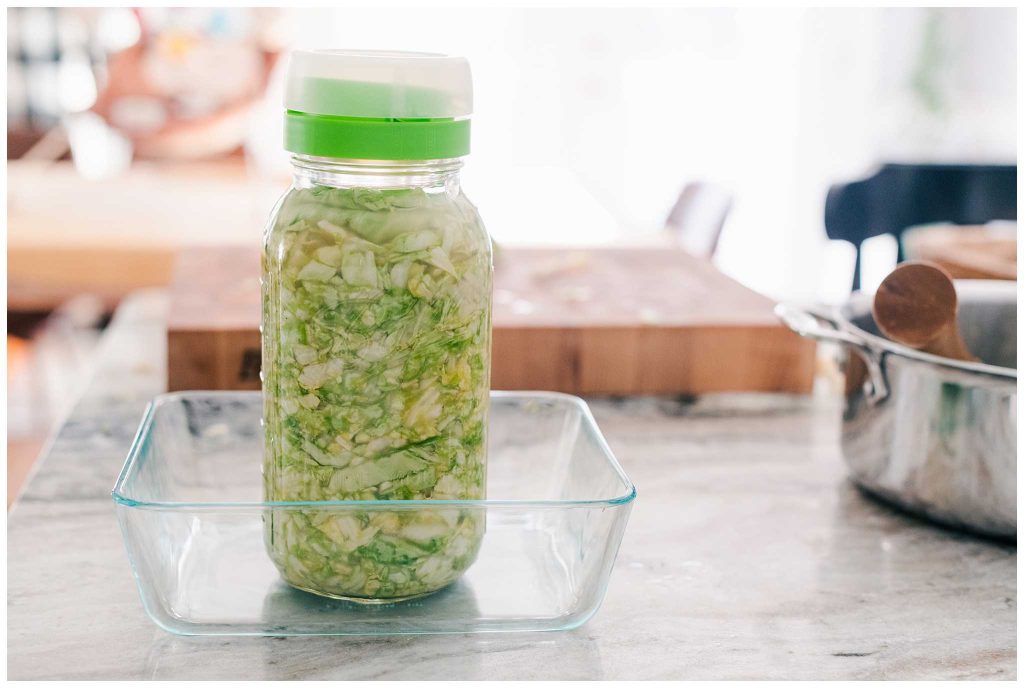
Why You Will Love Homemade Sauerkraut
If you’ve ever been weary of sauerkraut, let me tell you. Making it at home is a game changer. The best thing about this recipe is that you can customize the size of your cabbage. My family likes thick, crunchy pieces, so I chop the cabbage pretty. You can slice the cabbage as thinly as you want based on your preference.
The freshness of homemade sauerkraut is amazing as well! Once you make this incredibly simple recipe, you’ll never be able to back to storebought sauerkraut again!

Health Benefits of Sauerkraut
Sauerkraut is a fermented food that is low in calories, high in fiber, and packed with vitamins, minerals, and beneficial probiotics. The fermentation process of sauerkraut enhances the nutritional value of cabbage and creates new, beneficial compounds like lactic acid, which can help with digestion, boost the immune system, and reduce inflammation in the body. Additionally, sauerkraut is a good source of vitamin C, vitamin K, and antioxidants, which can help protect against chronic disease and promote overall health.
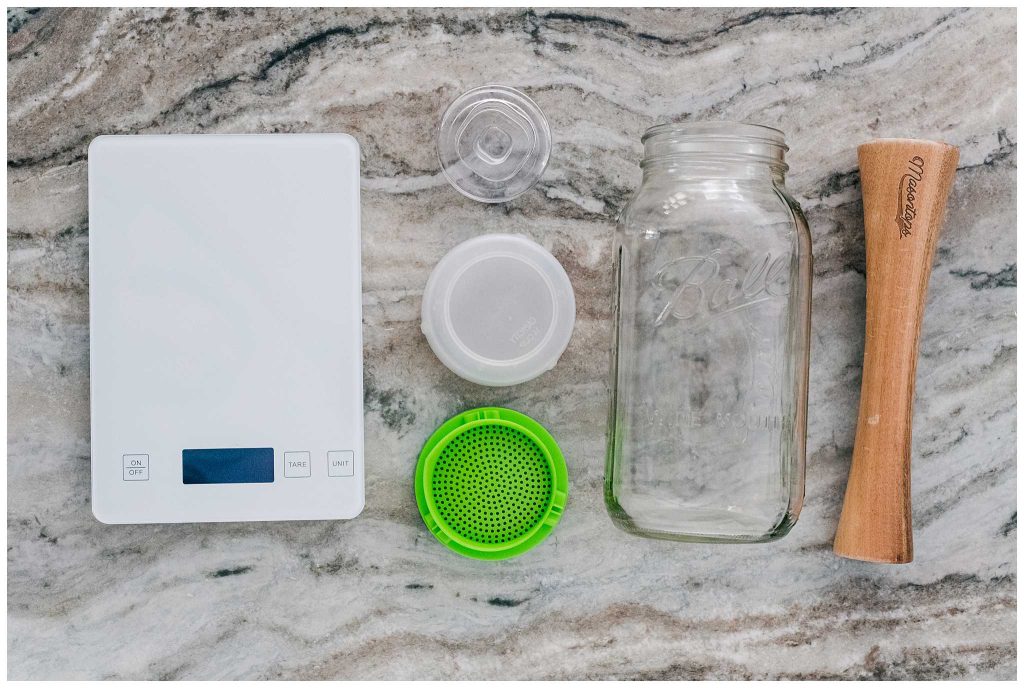
Tools You Need
Glass Jar or Sauerkraut Crock
I always use glass mason jars when fermenting. I like this because I can see inside and it also stores nicely in fridge. I am one of those people that unless I can see whats in the container, I will forget about it! So for me, glass jars are the best.
Scale
While a scale is not 100% necessary, I personally like know the exact amount of cabbage that I need. We will discuss this a bit further down.
Fermenting Lid
A fermentation lid is a specially designed lid that is used when fermenting foods like sauerkraut. Using a fermentation lid is important because it helps to create an anaerobic environment that is necessary for the growth of beneficial bacteria and the prevention of spoilage.
If you don’t have a fermentation lid, there are alternative methods you can use such as a clean, breathable cloth and a rubber band to cover the top of the container.
Fermentation Weights
Weights keep the cabbage submerged in the brine during fermentation. All the cabbage must be submerged to prevent mold and spoilage.
Pounder
My kids favorite part of making sauerkraut! A pounder, also known as a tamper or muddler, helps release liquid from the cabbage to create the brine. I have used my pounder in so many ways in the kitchen, from filling

Ingredients
The ingredients are so simple, I almost feel silly writing a blog about them! But then again, isn’t that part of the beauty of scratch made food?
Green Cabbage
You’ll need the star ingredient here, green cabbage. I use just under 3 heads of cabbage for a half gallon mason jar. I always purchase organic cabbage (or grow my own!) when making sauerkraut to ensure high quality saurkraut.
Salt
The amount of salt needed per head of cabbage when making sauerkraut varies depending on the recipe and personal preference. A general rule of thumb is to use about 1 to 2 tablespoons of salt per head of cabbage. However, it’s important to keep in mind that the salt not only adds flavor but also helps to preserve the cabbage during fermentation. It’s important to use the correct amount of salt to ensure a successful fermentation process and to prevent spoilage.
Tips For How To Make Sauerkraut
Choosing the Right Cabbage
Use fresh, crisp cabbage for the best results. Local, in season cabbage will be the most nutrious. I will usually grow my own, or buy from the farmers market during season and make a big batch to last us a while.
Remove a few outter leaves of the cabbage so you can remove any wilted or damaged leaves.
Measuring Salt Correctly
This is where a scale comes in handy! When you make sauerkraut, you need 1.5-2% of the weight of the cabbage in salt. Since the weight of cabbage heads varies greatly, a scale is nice so you know you’re adding the proper amount of salt. Too much salt can slow fermentation, while too little can lead to spoilage.
Keeping Everything Clean
Sanitize all tools and equipment before use to avoid contamination. Use clean hands or gloves to handle the cabbage. I will usually use tongs to fill my jars to help keep the mess down.
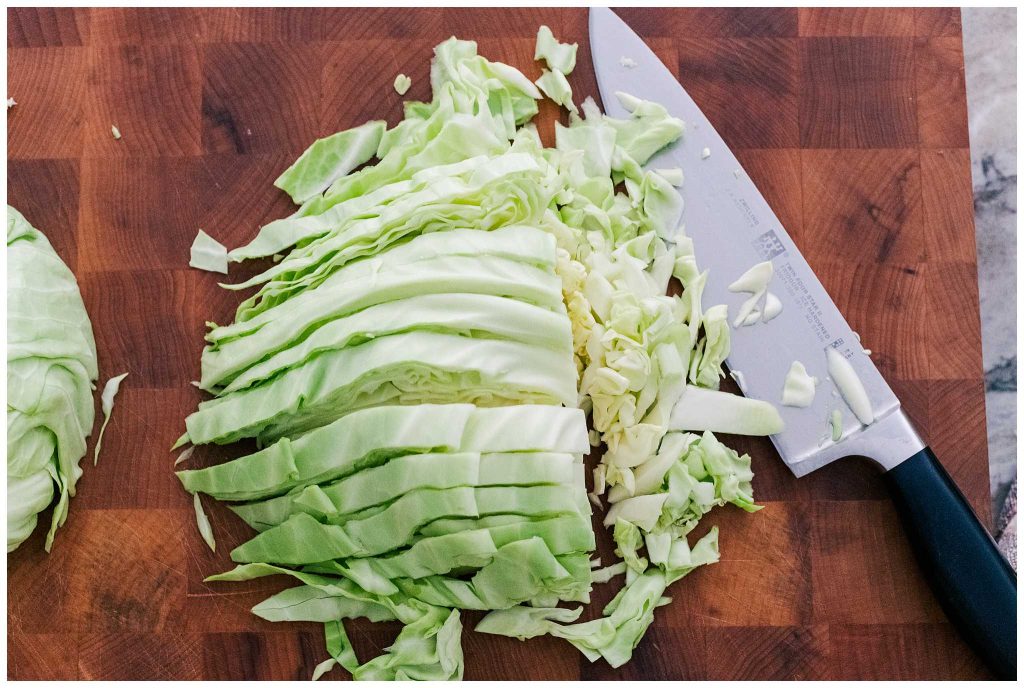
How to Make Sauerkraut
Preparing the Cabbage
Remove the core and thinly slice the cabbage. As I mentioned above, my family likes it thick and crunchy, but you can slice it as thinly as you want based on you and your family’s preference.

For a half gallon mason jar, I plan for 3 heads of cabbage. Depending on the density of the cabbage, it is usually a little under that. Any leftover cabbage you can throw in a salad or on tacos, yum!
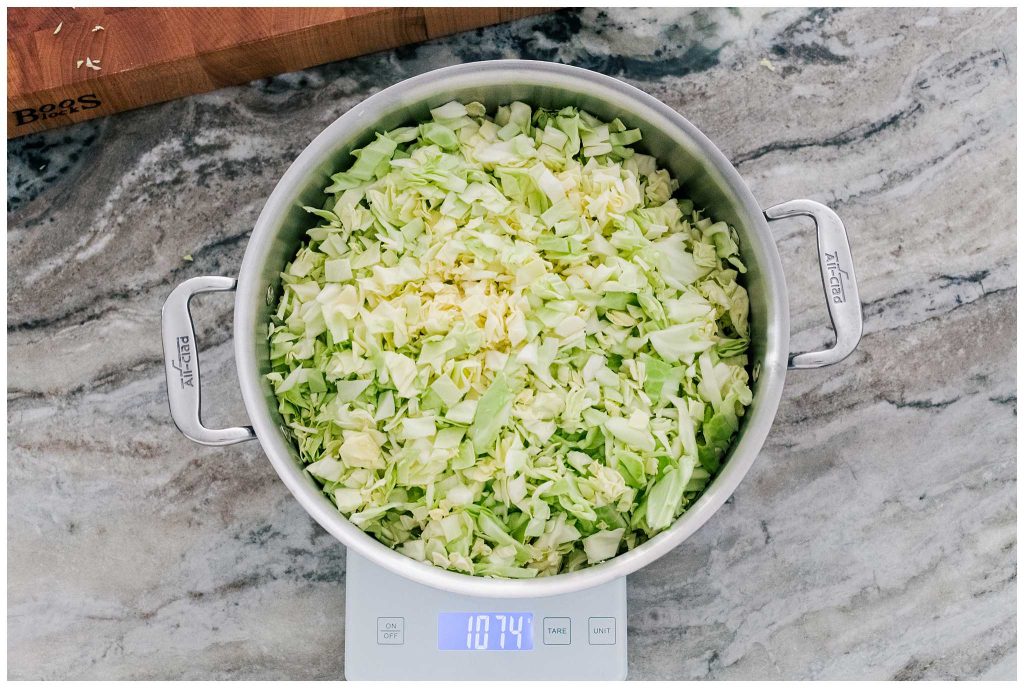
Weighing The Cabbage
Once all of your cabbage is chopped up, its time to weigh it so you know the appropriate amount of salt. Again, this isn’t 100% necessary, but it makes sure your adding in the exact amount of salt.
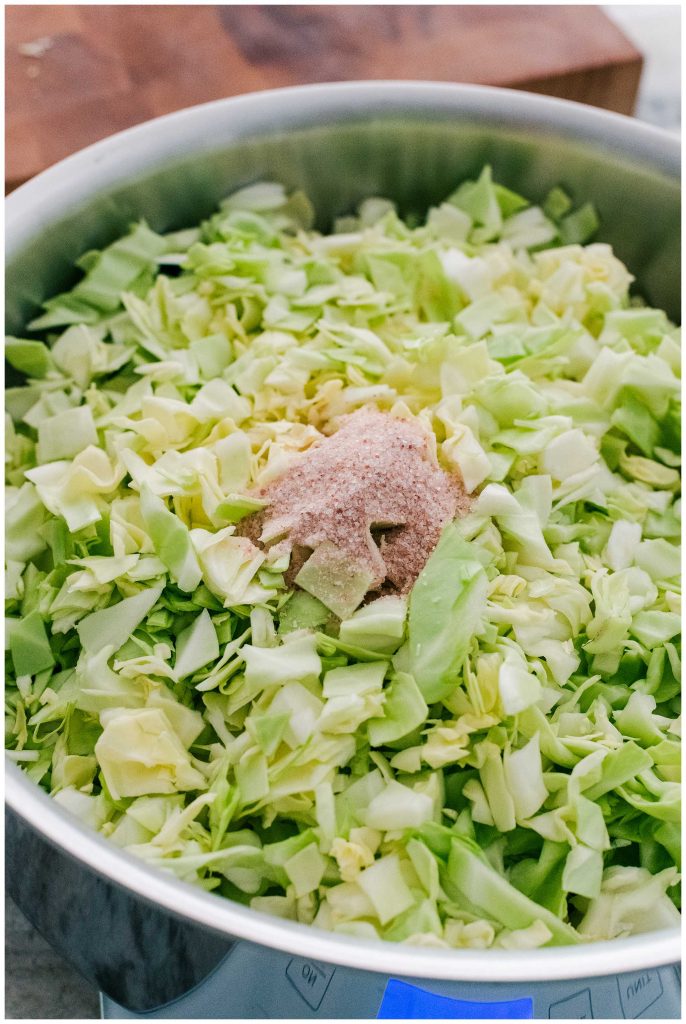
For my recipe, I ended up needing approximately 5.5 tablespoons of cabbage. This could be less or more for you depending on how many heads of cabbage you are fermenting. Remember, its 1.5-2% grams of salt per the total weight of cabbage or roughly 1-2 tablespoons per head of cabbage.


Massaging And Pounding The Cabbage
The next thing to do is get your hands a little dirty (figuratively speaking) and massage the salt into the cabbage. I will also use the pounder to pound it down a bit. Doing this breaks down the cells of the cabbage and helps it release its juices.

Packing The Jar
Next, transfer the cabbage and its juices to a clean, sterilized glass jar, packing it down tightly with a pounder or spoon to remove any air pockets. Continue to add cabbage and pack it down until the jar is filled right before the opening.

As you pack it down, you’ll start to see the lovely juice. Make sure you press firmly to remove any air pockets. Air = spoilage!
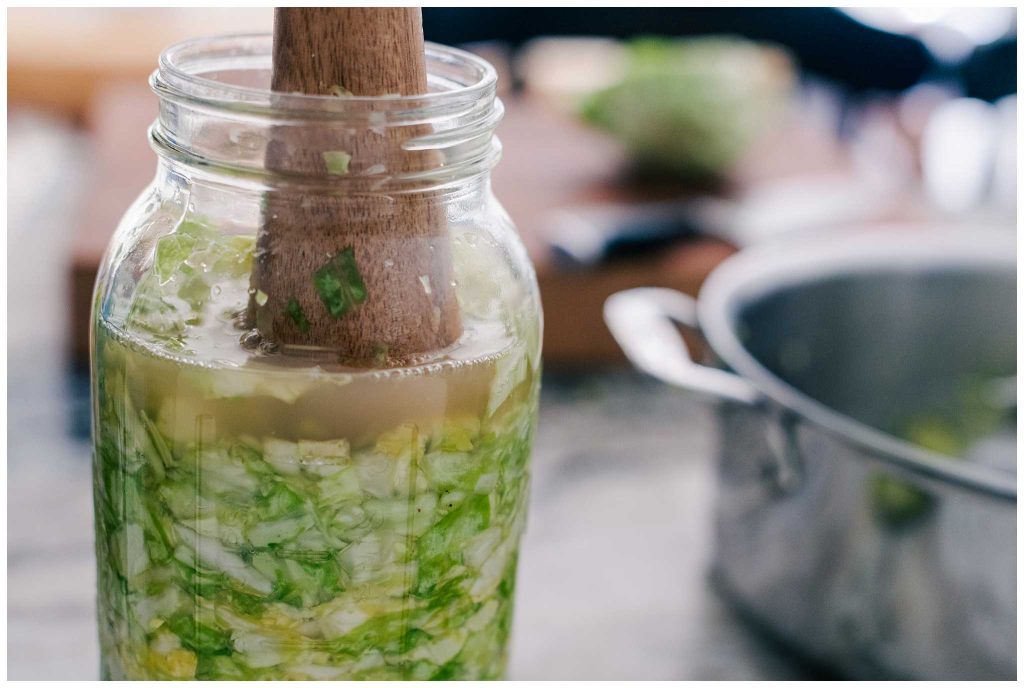
Adding Fermentation Weight To Sauerkraut
Once the jar is filled, place a fermentation weight on top of the cabbage to keep it submerged in its own juices. I like to place a clean leaf or two of cabbage in between the weight and the shredded cabbage. This helps keep the small pieces from floating to the top while it’s fermenting.

Letting The Sauerkraut Ferment
Finally, cover the jar with a fermentation lid or a clean, breathable cloth and store it in a cool, dark place for the fermentation process to take place. Check on the sauerkraut regularly to ensure that it stays submerged and doesn’t develop mold. After a few days, the sauerkraut should start to bubble and ferment. At 7 days you can do a taste test to see if it is your preferred amount of sour. Once it is to your liking, you can put it in the fridge for long-term storage.

Variations
While sauerkraut is traditionally made with just cabbage and salt, there are many flavorings you can add to give it a unique taste. Here are some ideas:
- Caraway seeds: These aromatic seeds have a slightly sweet and nutty flavor that pairs well with cabbage.
- Juniper berries: These small, dark berries have a piney flavor that adds depth to sauerkraut.
- Garlic: Fresh garlic adds a pungent and savory flavor to sauerkraut.
- Dill: Fresh dill leaves or seeds add a bright, tangy flavor to sauerkraut.
- Ginger: Fresh ginger adds a spicy and warming flavor to sauerkraut.
- Turmeric: This bright yellow spice adds a warm, earthy flavor and a vibrant color to sauerkraut.
